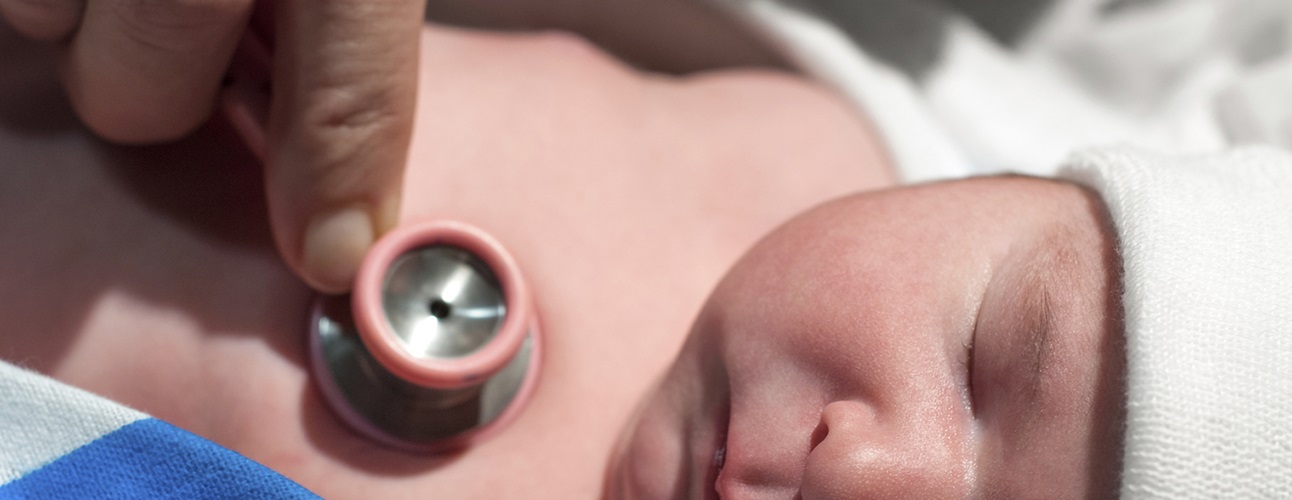Transposition of the Great Arteries (TGA)
Featured Expert:
Transposition of the great arteries, or TGA, is a heart defect that occurs when the two main blood vessels leaving the heart are in abnormal positions. TGA is a life-threatening congenital condition, meaning it is present at birth. Babies with TGA need surgery.
TGA is rare. It affects about 1 out of every 3,413 live births in the U.S. Ari Cedars, director of the Adult Congenital Heart Disease Center at the Blalock-Taussig-Thomas Pediatric and Congenital Heart Center, discusses TGA's symptoms, treatments and more.
What is TGA?
TGA occurs when the two main blood vessels coming out of the heart — the aorta and the pulmonary artery — are transposed, or switched in position. The aorta is positioned in front of the pulmonary artery instead of behind it. As a result:
- The aorta is connected to the right ventricle (one of the heart’s lower pumping chambers) instead of the left ventricle.
- The pulmonary artery is connected to the left ventricle instead of the right ventricle.
Sometimes TGA occurs with other heart conditions, such as:
TGA types
There are two types of TGA:
- Dextro transposition of the great arteries (D TGA): The aorta is to the right of the pulmonary artery. D-TGA is the most common form of TGA. This type of TGA almost always needs to be repaired in the first year of life.
- Levo transposition of the great arteries (L TGA): The aorta is to the left of the pulmonary artery. Another term for L TGA is congenitally corrected TGA. This type of TGA, in the absence of other heart defects, may not require repair early in life.
How does transposition of the great arteries affect blood flow?
TGA disrupts the way blood flows through the heart and lungs. In a normal heart, the pulmonary artery pumps blood to the lungs, where it gathers oxygen. Then the aorta moves that oxygen-rich blood from the lungs to the rest of the body. However, TGA causes oxygen-poor blood to go to the body instead of the lungs, and oxygen-rich blood to go to the lungs instead of the body. TGA can cause infants to have dangerously low blood oxygen levels.
TGA Causes
Experts do not know what causes TGA. It may be related to abnormalities in certain genes or chromosomes. Certain risk factors can also increase the chances of TGA, such as:
- Family history of congenital heart defects
- Pregnancy-related health concerns, such as smoking, drinking, uncontrolled diabetes, taking certain medications or contracting infections like rubella
Signs and Symptoms of Transposition of the Great Arteries
TGA symptoms usually appear in the first hours or days after birth. Babies may exhibit:
- Cyanosis (bluish skin, lips and nails from not getting enough oxygen-rich blood)
- Fast or labored breathing
- Low appetite
- Poor feeding
- Rapid heart rate
- Slow weight gain
- Weak pulse
Transposition of the Great Arteries Diagnosis
A prenatal ultrasound, an imaging exam performed when a baby is still in the womb, might spot TGA before birth. If a baby shows symptoms of TGA after birth, the clinician may order an echocardiogram (echo) to see the heart’s structure and how well it is pumping blood.
Other tests that can confirm a TGA diagnosis include:
Transposition of the Great Arteries Treatment
Babies with D TGA need surgery (usually in the first few weeks of life) to repair the defect and restore normal blood flow through the heart and lungs. Without treatment, most children with D TGA will not survive the first year of life.
Some infants receive medication or other treatments, such as cardiac catheterization, to help the heart work better until they are ready for surgery.
Medical Management
Treatments that can help a baby’s heart and lungs before surgery include:
- Intravenous (IV) medication to help the heart and lungs work better
- Prostaglandin E1, a medication that helps blood flow through the heart
- Supplemental oxygen or a ventilator (a machine that helps do the work of breathing)
Balloon Atrial Septostomy
In some cases, infants need a procedure called a balloon atrial septostomy (BAS) a few hours after birth. This minimally invasive procedure uses a catheter (a thin, flexible tube) to access the heart and create or enlarge a hole between the heart’s upper pumping chambers. This procedure allows more oxygen-rich blood to get to the body. Infants who have BAS still need TGA repair surgery later.
Transposition of the Great Arteries Surgery
TGA repair surgery is an open-heart procedure called an arterial switch operation. A surgeon reconstructs the heart by:
- Attaching the pulmonary artery to the right ventricle
- Attaching the aorta to the left ventricle
- Attaching the coronary arteries to the aorta
Transposition of the Great Arteries Complications
Some children still develop problems with their heart function or rhythm (arrhythmia) after TGA repair surgery. They may need medicine to:
- Control blood pressure
- Get rid of extra fluid in the body
- Help the heart pump better
- Slow down the heart if it is beating too fast (a pacemaker can help regulate the heart if it is beating too slow)
Living with Transposition of the Great Arteries
Even after TGA repair, the heart will not be normal, and some people will need additional surgery.
People who have TGA repair surgery as infants may continue to have complications throughout their lives, such as:
- Congestive heart failure
- Coronary artery problems
- Heart muscle problems
- Heart valve leakage (regurgitation)
- Pulmonary artery narrowing
- Enlargement of the aorta
Long-term follow-up care visits with a pediatric cardiologist and an adult congenital heart specialist are necessary.





